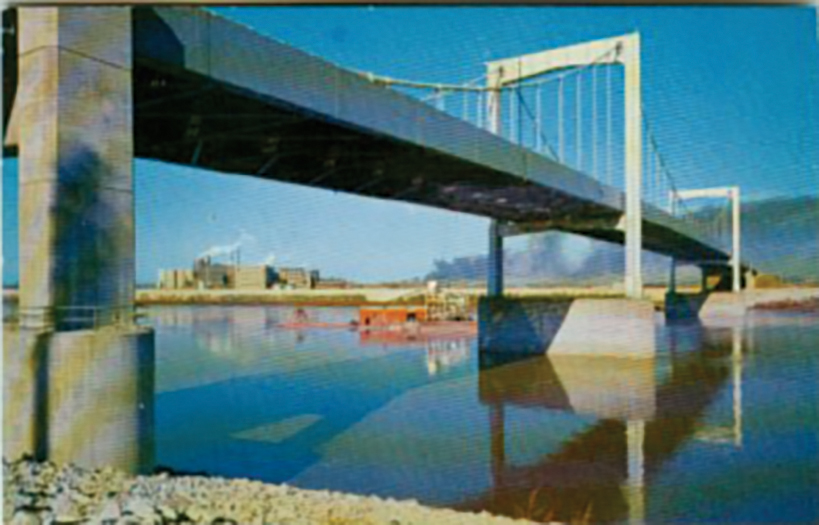 Michael Bushnell
Michael Bushnell
Northeast News
In 1950, there were only two bridges that spanned the Missouri River to the north, offering access to downtown Kansas City.
The old Hannibal Bridge, originally constructed in 1917, and the Armour, Swift & Burlington (ASB) down river were antiquated by modern standards even in 1953 — the year prior to the Paseo Bridge being opened for traffic.
When opened, the Hannibal Bridge allowed railroad traffic on its lower deck and automobile traffic on the upper. The ASB was similar, in that auto traffic was permitted along “outrigger” lanes on the upper deck and train traffic was routed along the lower deck. Trolley traffic and pedestrians occupied the center lanes of the upper deck.
To accommodate barge traffic on the river, the lower deck was engineered to rise roughly 60 feet above its original grade through a complex system of pulleys and cables attached to massive concrete weights on either end of the span. The bridge’s operator was stationed in a small metal shed on top of the iron structure.
After opening in August 1954, the new Paseo Bridge offered a whole new avenue for automobile traffic traveling to the north. The four-lane facility was designed by the local architectural firm Howard, Needles, Tammen and Bergendorf — or HNTB — and carried a toll of 10 cents to cross the bridge.
The location of the bridge was hotly contested throughout the largely Italian North End neighborhood, as well as the western regions of Northeast. The new interstate highway system was in its initial building phase and the routing of the roadway bisected the community as well as laid waste to anything along Sixth Street between The Paseo and the Kansas/Missouri state line. There are still some who actively believe that the strategic routing of what is now I-35 was designed to break up the powerful voting blocks of the North End and Northeast that harkened back to the old Boss-style of politics so prevalent in Kansas City throughout the early part of the 20th Century. City Hall was not to be denied, however, and the interstate essentially carved a schism in the community that still exists to this day. The new Paseo was opened and another notch in the decline of the North End and Northeast was sealed in concrete.
The self-anchored suspension bridge, according to MoDot, carried almost 90,000 cars per day, a total length of 1,831 ft. and a width of 51.8 ft. Its longest span was 616 ft. There were two plaques on the south end of the bridge, both recognizing the original founders, designers and builders.
On the east pillar, the plaque read: “The Paseo Bridge received the annual award of merit from the American Institute of Steel Construction for the most beautiful steel bridge of 1954.”
The plaque on the west pillar read: “The Paseo Bridge was sponsored by the Jackson and Clay County courts with contributions from the Missouri State Highway Commission, the city of Kansas City, William E. Kempo, Mayor, L.P. Cookingham (City Manager) and the Citizens Regional Planning Council.”
Two years after the opening of the Paseo Bridge, the new Broadway Bridge opened for traffic, making the commute to Clay and Platte counties easier yet.
Work on the new Christopher S. Bond Bridge, the Paseo’s replacement, was completed in 2011.


















